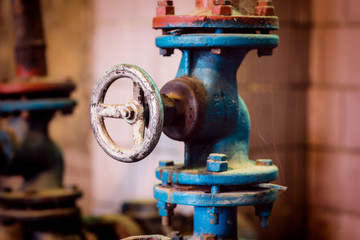What Does the Operating Condition of Sanitary Valves Depend?

The working condition of the sanitary valve depends on many factors, including working pressure and working temperature of the medium, variation of pressure and temperature, driving mode, the installation position of the sanitary valve, service cycle, etc.
Working pressure and temperature
Generally speaking, the higher the pressure and temperature of the sanitary valve, the worse the working conditions will be. In order to ensure the safety and reliability of the valve, the pressure bearing parts and pressure controlling parts of the valve needs to have sufficient strength, especially the properties of materials at high temperature and low temperature, such as thermal strength, oxidation resistance, thermal stability and impact toughness of materials at low temperature.
The sealing surface material is also required to have good abrasion resistance, abrasion resistance, corrosion resistance, erosion resistance, etc. since the high-pressure medium passes through the density surface quickly and the erosion is serious.
Different forms and materials must be selected according to the characteristics of medium, temperature, and working pressure to guarantee the sealing performance of packing and gasket. In the valve that operates in a corrosive medium, all pressure and pressure control parts (including gaskets and packing materials) in contact with the medium should be stable enough to withstand the chemical action of the medium. Otherwise, the service life of the valve will not be long enough to meet the requirements.
Pressure and temperature fluctuations can cause poor sealing conditions on the joint flange, as the joint bolts and gaskets will be deformed when the working pressure and working temperature are high.
When the working pressure and working temperature decrease, the gasket will lose its sealing performance due to insufficient compressive force, and such periodic fluctuations also affect the material properties of the parts, so fluctuations in working pressure and working resistance are extremely adverse to the working conditions of the valve.
Mechanical characteristics of the driving devices
Each drive has its own stress characteristics, which are related to different specific pressures on the sealing surface, as well as stress on the stem and stem nuts and other parts. When the electric device is closed to the endpoint, the impact load is applied to the sealing surface, especially the sanitary globe valve. In sanitary relief valves, the sealing surface is also impacted by spring and hammer when the disc resets, which worsens the sealing surface and affects the service life of the valve to varying degrees.
Working conditions
Working conditions are poor when sanitary valves are installed and used outdoors. Since the valve is prone to rust and sometimes even damage the lubrication after being exposed to the rain and wind, the wear of the parts will be accelerated if dust and sand fall on the joint of the parts of the valve.
If the valve is installed at sea, the working environment of the valve is even worse. The valve as a whole will be soaked by chlorine ions in the salt fog, and it will rust easily and lose the function of the valve itself. Therefore, the selection of valve material to be considered resistant to chloride ion corrosion, and should also pay attention to the surface of the paint.
If the valve is installed in the ground, the valve with the lengthened all-welded belt should be selected to avoid damage to the connecting parts and moving parts of the valve after it is buried in the groundwater and sand.
In order to guarantee the service life of the sanitary valve, the structure of the valve and the material of the main parts must be selected according to the working conditions, otherwise, the service life of the valve will be reduced.
At the same time, the maintenance of the valve should be strengthened in the process of operation, such as regular removal of dirt, regular lipid injection, regular maintenance, etc., to extend the service life of the valve.







